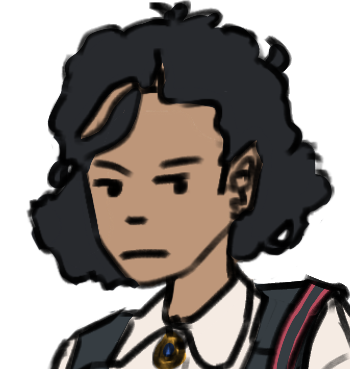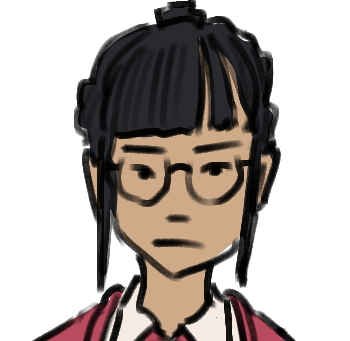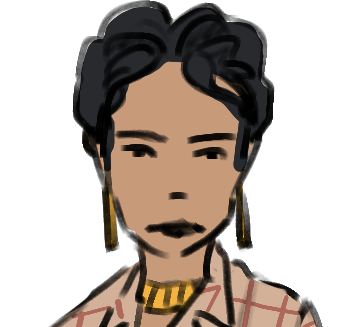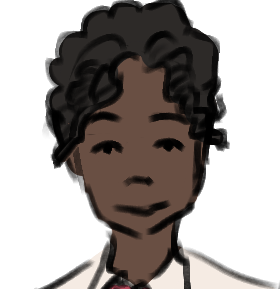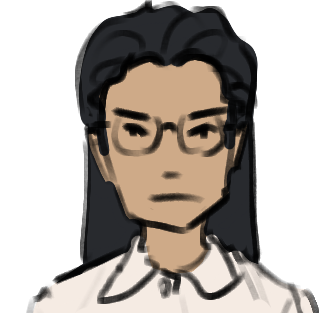NEW Story: Cocktail
Vekllei's New-Age Women

This article is not part of Vekllei canon. It may be old, obsolete or just a bit of fun.
A woman has so many parts to her body, life is very hard indeed.
— Lu Xun, 1927
Even from my point of view, as a woman, there is nothing attractive about such ‘backward elements.’ Their skin is beginning to wrinkle, their hair is growing thin, and fatigue is robbing them of their last traces of attractiveness.
— Ding Ling on the long-marcher woman soldiers, 1942
When Tzipora first arrived in Vekllei in 2063, she was traumatised by the foreignness of everything. It was not just that they drove on the wrong side of the road, or that the chocolate was made by someone else, but that her whole understanding of the world — the world she’d been raised in all her life — was unravelled within weeks. It did not matter if you learned the language, or dressed like them, or worked with them — the way a Vekllei person thinks seemed totally alien, as though they were tuned into a frequency that she couldn’t hear. That was very difficult for her.
Her clearest memory, out of all the emotional turmoil in her first few weeks, was the clothes. Tzipora was not fashionable or materialistic, but she’d never had nice things to wear. In Vekllei the things on the rack were simple, and often second-hand, but they were very well made and the department stores had a big variety. She picked out five shirts, nearly identical, and decided that these would be what she would wear from now on — it was her own way of establishing an identity; SHE IS THE GIRL WHO WEARS THIS TYPE OF SHIRT. Little things like that mattered a lot, because Tzipora was treated differently here. She was both ‘young’ and a ‘girl’, which had implications for how overseas people talked to her and how she was regarded. Here, almost no one seemed to notice. She had dignity by default, which was exciting and scary at the same time, so she needed something other than her appearance to claim as ‘hers’. And at that time, it was the shirt with the pleats.
Vekllei is a place that is very much radical but, either intentionally or as a byproduct of its opaque culture, suppresses the appearance of radicalism in its public affairs (or as they say there, ‘sun-facing space’). This is for a few reasons. First, Vekllei uses its obscurity as a weapon against its continental neighbours, who might pull it into geopolitical tensions it wants no part of. The second is that Vekllei’s failed revolutionary movements of the early 20th Century are buried with the Junta that suppressed them. The third, and most critically, is that Vekllei people themselves are unaware of just how saturated their lives are with the cultural and political ideology of the floral period, which makes “foreign” political thinking difficult and results in a lot of empty rhetoric — for example, “petticoat socialism” describes the Bureau System, which does not have much to do with either petticoats or continental socialism.
This paradigm makes more sense when you consider that there are really two Veklleis — the one that existed before the Atomic War, and the one that exists now, called the “Floral Period” or sometimes “Petticoat Society”. The one that existed before has little resemblance to the one that exists now, and that is the way people have continued to think in the decades of independence — anything prior to 2015 is, simply, history.
Make no mistake — Vekllei is tremendously radical in its culture and politics, which it tempers with conservative names and third-way politicking. Today’s post looks at how the Vekllei woman changed in the years between 2005 and 2020.
Not unlike revolutions of years past, postwar Vekllei had (for the moment, at least) lost many of its structural oppressors of women, since the structure itself had collapsed quickly. The interim government had taken an orthodox, though contrarian, communist position, which ushered a new handbook of rhetoric towards de-objectification of women and their pragmatic and social value in the workforce. The interim government had several key women figures among it, who are credited with its success in this critical, and rapidly changing period.
In the Vekllei socialist (socialisme oa Vekllei) line of thinking, there are two points of attack. There was the suppression of old models of feminine beauty, which argued against women’s independence and dignity in favour of their security with men, who made up Vekllei’s economic and social caste throughout the entirety of the Junta’s rule. But there was also a very real fear that women’s liberation by Western metrics would simply evolve indentured living into a more obtuse, and in some ways more sinister, commodity-woman (cosmavisiousnesh, lit. ‘plastic woman’1), who was free to educate herself but found her appearance subjected to permanent scrutiny — a product for a consumer, dependent on shifting fashions and complex social constellations still fundamentally controlled by men. This fear was not unfounded, as many educated women of the interim government (who made up nearly half of its members) had spent significant time in Western Europe and the United States, and were keenly aware of who was “gazing” (lismious) and who was being “gazed at” (visimett).
The solution developed by the interim government was both political and spiritual, designed to demolish the external remnants of Vekllei’s pre-war and highly stratified society, and the looming threats of foreign investment, new wealth, and an import of the modern commodity-woman. Most importantly, it understood that present notions of empowerment or disempowerment were problematic unto themselves — whether it was sexual liberation, modesty, or indeed the economic role of women in abstract — their ability to empower was still fundamentally chained to old society, which was still dominated by the sexist cultural default.
In 2016, Cisma de Diviousmesn, First Secretary of the War Recovery Committee, described the problem as such in The Atlantic.
We are nearing a precipice that all Vekllei women may fall into, should we follow unblinkingly the Visis Plan [postwar redevelopment plan], and allow foreign investment to replace English colonial governor-generals; we should be wise enough, so to speak, to not trade a king for a master and call it recovery.
In Upen’s discourse on womanhood, the essential virtues of a woman have always included good words, good work and good fortune — emphasising the role of women as both an alias for success/wealth and also as responsible for that fortune themselves, either in the workplace or through their innate spirituality. This has remained true throughout much of Vekllei’s history, but was obfuscated by the economic masculinity of Vekllei’s protectionist mercantile period. After the war, Upen saw a revival that would culminate in the spiritual fever of the late 2010s and early 2020s. The interim government co-opted this surge pragmatically, encouraging a shift in local perceptions of womanhood through spiritual, rather than political or ideological, methods.
“This is a New Age,” the posters said. “So become a New-Age Woman.”2
Becoming a New Age Woman involved two things — tearing down the external oppressions of the old and interim periods (harassment, domestic violence, and male interference in the affairs of women), and the interrogation of internalised sexisms (empowerment by male opinion [this included styles women found attractive, as inherited from men], abolishment of economic preoccupations, and the reconstruction of womanhood in abstract). This individual struggle was supported by the many social programmes developed by the interim government, with names like “economic feminisation” (abolishment of the male economic burden) and “abolishment of self-beautification for your man” (scisimionze, or “self-adornment/self-beautification”).
The point was not to empower women by simply displacing men from male economic and social constructions — a move that was seen as disempowering because of who was setting those priorities — but to rebuild Vekllei’s domestic understanding of “the woman” by the terms of women, legitimised by the authority of the interim government and the powerful cultural force Upen continues to have on society. Within such a culture, it was reasoned, women would be free to choose what womanhood meant to them, since it was not simply reactive to a sexist cultural default. The sum of this effort was called ‘sun-facing,’ or semoisnesne, which referred to the progressive attitude of both the individual and the country.
Although Vekllei’s New Age Woman had dramatic effects and benefitted the status of women in Vekllei society tremendously, it was nonetheless fundamentally political and had obscure and surprising cultural artefacts buried within. The idea that a woman would be “free to choose” her own womanhood was a little misleading, since the interim government was rapidly developing its plan for “petticoat society,” in which Sundress Municipalism, the Bureau System and Floral Aestheticism would become such powerful cultural forces that no man nor woman would be able to escape them entirely.
As the wealth of the country grew and then exploded in the transition to Vekllei’s floral society, it was clear how the structure of petticoat society continued to influence women in Vekllei. Women can wear whatever they like — but simplicity and subtle self-decoration are common and encouraged by the uniforms system and floral aesthetics. Women can live however they like — but education is compulsory in childhood and highly valued, and young women are encouraged to fulfil ‘the female inclination for leadership’ inherited from Upen’s mother-metaphysics. And women can date whomever they like — though ideological compatibility, and not appearance, is encouraged in the semoisnesne attitude.
Some of these things are easily argued as good — few would assume there are many feminists in the world who argue against the education of women — but they do betray the notion of truly “free” choice, insofar as Vekllei society is dominated by the economic and spiritual values of its structure. Vekllei considers capitalist economics, exponential growth, and gross historicism to be “masculine” — of course that sort of language trickles down into the social aspects of society. More directly, it prioritises form, colour, and purity in aesthetics — of course that aesthetic ideology affects how people dress, and contributes to its uniformed culture.
It is difficult to place where the state begins and ends in Vekllei, which is how it can be argued for as an unfree and anarchic society simultaneously. So too is it difficult to determine how much of Vekllei culture originates in the centres of power in Vekllei — either political or religious — and subsequently there are problems in clarifying how women are affected by power, especially since women participate and in some cases dominate those hierarchies. Are they externalised, or internalised? Who is gazing at who?
Regardless of Vekllei’s cultural obscurity, which affects much more than politics and many people other than women, it is clear a dramatic and liberating shift occurred in Vekllei’s interim period of independence, and that shift has contributed tremendously to the status of contemporary Vekllei women, who enjoy economic and social freedoms that were unimaginable just decades prior. Even though Vekllei has not embraced political iconography to celebrate their indigenous feminism, we can see just how radical and wide-ranging the changes made were.
